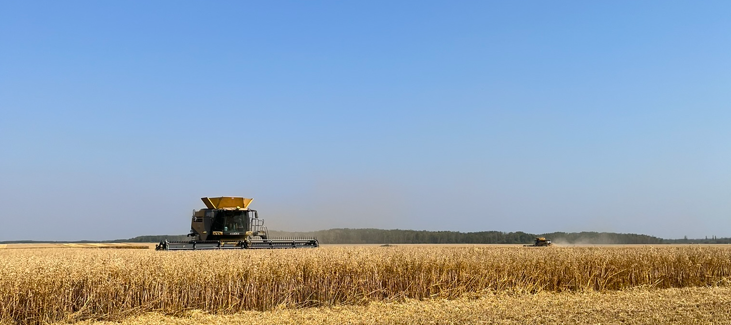Western Canadian Crop Market Update
Click Here To Access 2024/25 Crop Recommendations
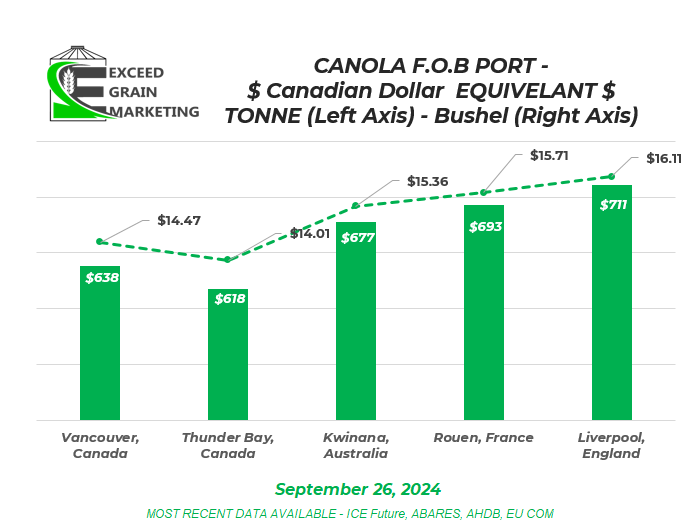
Canola
- Updated Recommendations in the Link Above
- Canola posted its second weekly gain. Closing for Friday at $603.80. Canola hit a contract low of $538.80 on September 16th. The November contract hit $619.10 on Wednesdays session before pulling back within the session.
- Canola exports remain strong through week 7 of the crop marketing year. Canola exports sitting at 1.7 million tonnes vs 492,000 same time last year. Canada has remained a cheap source of Canola for the globe. Still as of this week coming in with a significant discount to global pricing.
- Port of Vancouver strike began Tuesday September 24th. Strike negotiations have been relatively quiet. The strike is of the ability to chokehold transportation logistics. The ports currently striking account for over 50% of Canadian Grain Export capacity. Another week of strike action and we will begin to see logistical problems backing up into the Western Canadian elevation system.
- Early exports have been very strong for Canola but still need to keep the goods flowing.
- The Chinese Antidumping investigation is likely linked to the Electric Vehicle and US steel tariffs launched by Canada in late August.
- Canadian tariffs go into affect on October 1st on Chinese EV and Steel
- Statistics Canada put out its latest figure at 18.9 mmt. See chart at bottom of report
- Private analysts well below 19mmt for the crop being currently harvested. Pushing 18.5mmt +- as the remainder of the canola crop comes off fields.
- Concerns over oil quality in the crop.
- Canada does not have any system for reporting sales, only reports actual exports. After week 7 of the marketing year, we have moved out over 1.7 mmt. 492,000 was the figure last year so a much better start to the marketing year.
- Port stocks got smaller week over week. 106,000 tonnes sit in Vancouver vs 240,000 same time last week. Thunder Bay stocks grew to 179,000 tonnes vs 153,000 last week.
- Overall market sentiment understands that we have a large Corn and Soybean crop coming in the United States. This crop is just beginning to come off. Seeing some corn and bean harvest taking place in southern Manitoba as well.
- United States soybeans FOB sitting at some of the cheapest values in the globe. North American grains in general very cheap and we will need some impressive usage / export numbers to incent traders to take their fingers off the sell button.
- For the short term, rallies need to be sold into if producer is undersold. Know your position and where you want to be sold. Opportunities will need to be capitalized upon in short order. Work with your advisor to “stickhandle” cashflow, logistical and other requirements. Ensure you are in the position you need to be and avoid cashflow issues.
- PRODUCTION:
- Western Canadian Crop forecasted to be larger than last year. USDA forecasting a 20mmt crop for Canada.. Most private analysts have the crop at 18.5 mmt. Stats Canada sits at 18.9 mmt
- USDA Still at 20MMT.
- The top end yield has been trimmed. Many producers reported a great start to the crop but things dried out at the tail end and heat came intensely during this same timeframe. Crop coming in smaller than anticipated across the Canadian prairies with small pockets of exceeding expectations.
- Very early canola yields mostly below expectations with pockets of good.
- EXPORTS and USAGE:
- European Union harvested a much smaller crop than last year. Crop estimates came in close to 17.6 mmt which is lower than the 20mmt early forecasts.. EU needs around 25mmt total and larger imports will be required. Some carryover in the equation but USDA states they will need 6.6mmt. Canada exported next to nothing this past marketing year to EU. Last year we exported 103,000 tonnes to Belgium. Few years ago, it was not uncommon to do 500,000 to 1.5 mmt in years where EU faced crop shortfall.
- OLD CROP: For the 2023/24 canola export program, Canadian canola was much to expensive to compete with Australian Canola for the first half of the export program. By early January, Canadian canola exports were only tracking for 6mmt of total exports, a dismal export number. It was not until exports picked up last half of the year where we came in right around 7mmt.
- AAFC has 2024/25 export forecast at 7.0 mmt. This is viewed as a conservative figure, many private analysts sit around 8.0 mmt assuming Japan, Mexico and European Union will likely be in for more crop, time will tell. Chinese demand is in question. Will they place tariffs on CDN imports or will they import their requirements before taking action?
- See Global FOB canola prices chart above and historic ones below.
- GOING FORWARDS:
- Harvest starting to wrap up. It is key that traders get a good start to the canola export program. Which shows promise so far. Chinese trade spat has ability to cause logistical headaches going forwards. Global Rapeseed and Canola balance sheet has potential to tighten up longer term, ending stocks already shaping up 19% smaller than last year according to USDA figures. Will mostly depend on what Canadian canola crop comes in at. We know other global production regions well enough already as harvest underway. Early yield reports showing lighter than earlier anticipated
- Australian crop the wildcard here, although their crop is expected to be 200,000 tonnes smaller than last year. This crop is in the ground and will be harvested Oct/Nov/Dec. 5.5 mmt is current estimate.

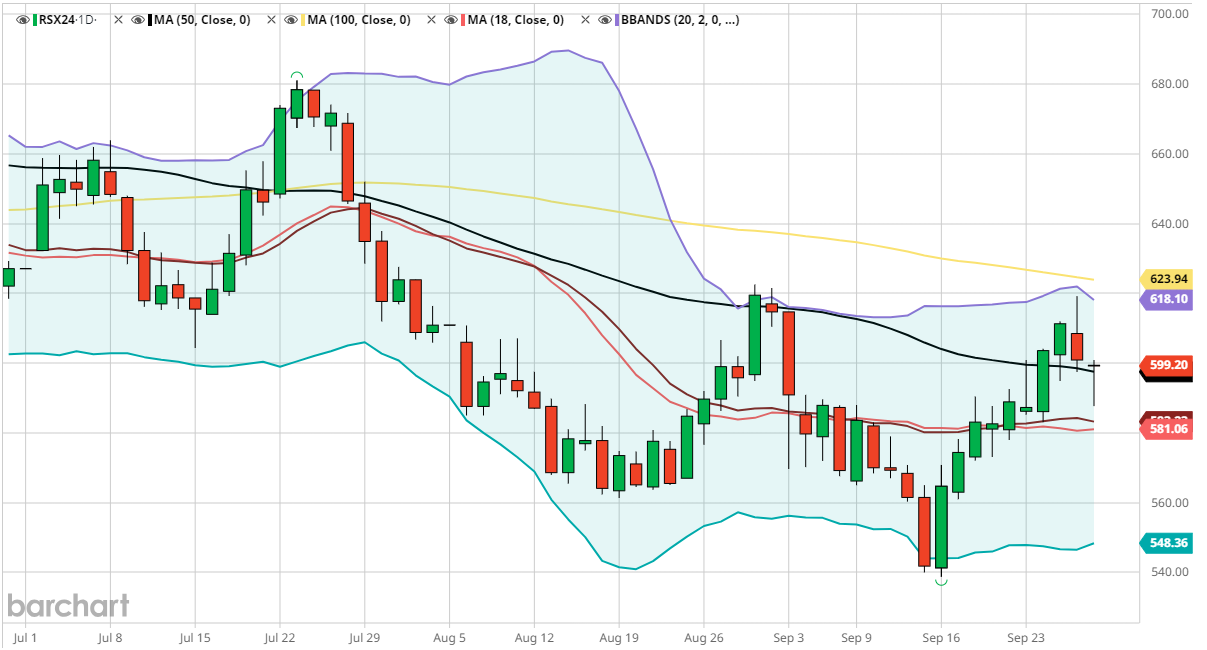
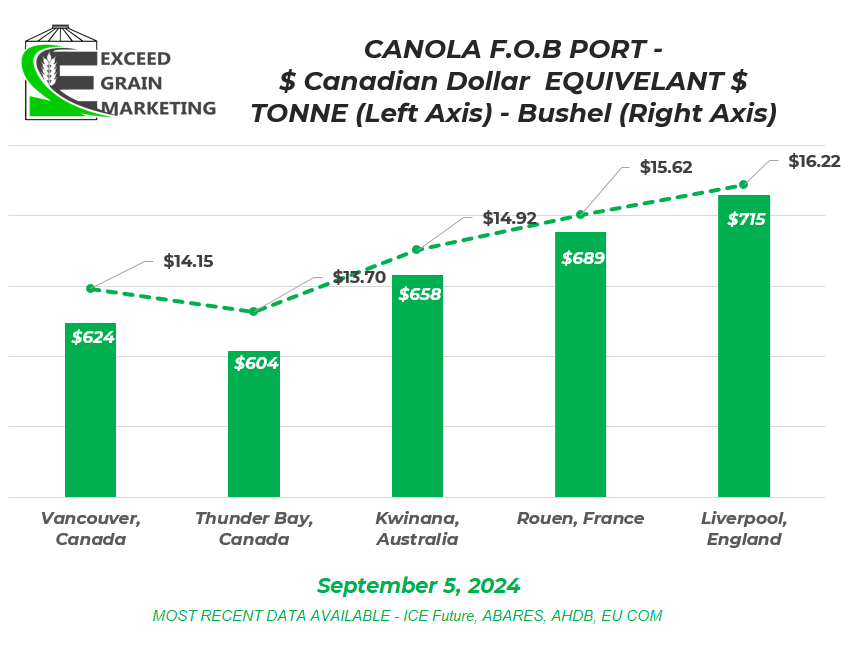
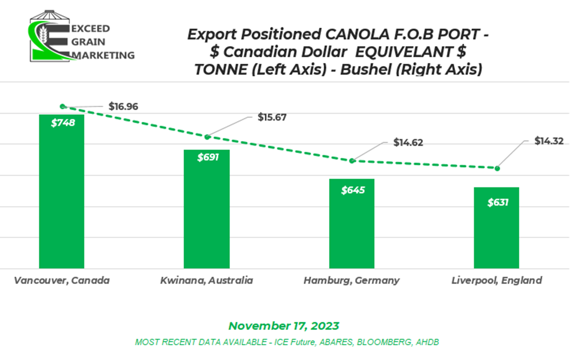
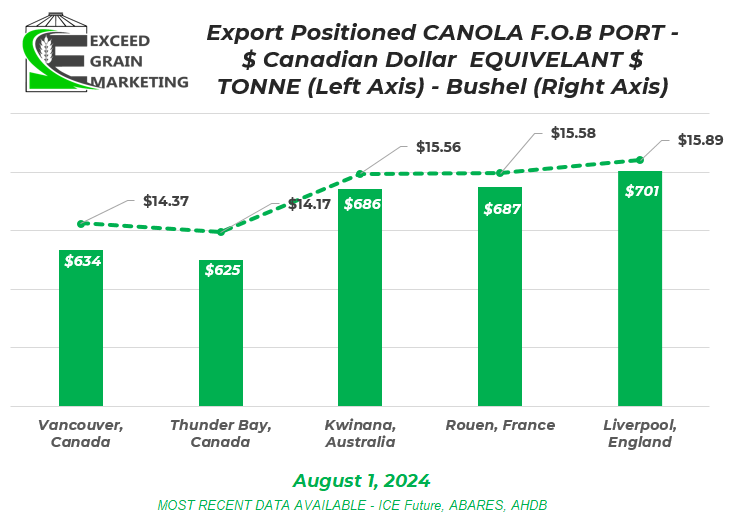
Spring Wheat
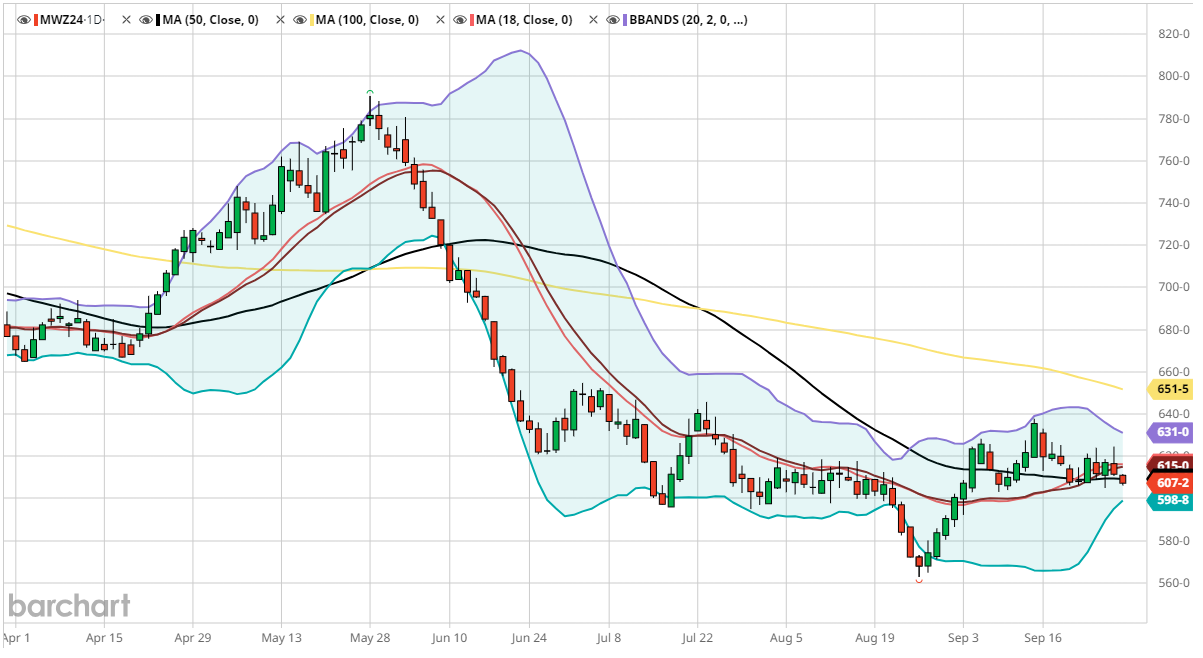
- Spring Wheat values chopping sideways. Spring wheat closed up slightly for the past five trading days. $0.01 per bushel for the week.
- Canadian wheat exports still coming out strong through week 7 but below last years initial pace. Shipments running about 4 ships behind last years pace.
- USDA added about 600,000 tonnes to global ending stocks. 257.2 mmt down from last years 265.2 mmt.
- Good quality and abundant yield being reported in northern United States. Limited quality concerns so far in the crop vs other years.
- Wheat corn and soybeans have been seeing some general reprieve in recent sessions here after a lower August. Wheat values picked up about $0.40 per bushel since its August low.
- Markets in general have been in a downwards trend since the end of May. Past two weeks have started to shift this notion. All growing season, no weather stories and prospects of a potential record yield from North Dakota, the largest Spring Wheat producing state in the USA
- For the short term, rallies need to be sold into if producer is undersold. Know your position and where you want to be sold. Really work closely with your advisor on your general marketing plan, decide what crops need to move and what crops we are keeping at home. Weight the risk and reward of each decision.
- PRODUCTION:
- Canadian non durum wheat crop expected to be large. 1.2 mmt larger than last years crop. Around 29MMT is expected to be produced according to AAFC’s latest stab at the crop size. Looks like ending stocks could be more burdensome than earlier forecasted as well.
- Wheat will come down to quality. Protein levels and quality will be closely watched.
- Global production – Winter and Spring wheat crop is off in the United States. Quality was quite good and plenty of good yields reported.
- Across the pond, wheat quality was questionable at best. Some multi decade low wheat yields being reported in Germany and France Plenty of low protein wheat coming off fields in Russia, Ukraine, Germany, France, Poland. Grading issues a concern over rains at harvest especially in France and Germany.
- French wheat is forecasted by private analysts at around 25 mmt. Last year the crop was closer to 35mmt
- EXPORTS and USAGE:
- Global balance sheet for wheat actually tightest in several years. Ending stocks of 257 million tonnes vs 260 to 285 mmt range in recent years. Balance sheet amongst key exporters even tighter.
- Canadian exports last year were particularly strong, not due to cheapness, but due to the quality of the crop. We need some good new crop quality coming into the system to give us the blending capacity we need. Canadian crop was blended and fit a gap in the market. Exporters looking to hit the same niche this year and push wheat exports as strong as they were last year.
- AAFC has 2024/25 export forecast at 20.5 mmt. This is viewed as a strong year and will keep ending stocks in check.
- GOING FORWARDS:
- Harvest is wrapping up, wheat prices coming off of some of the lowest levels in 4 years. We are 30% sold new crop overall and will await quality results before making next cash sale move.


Corn
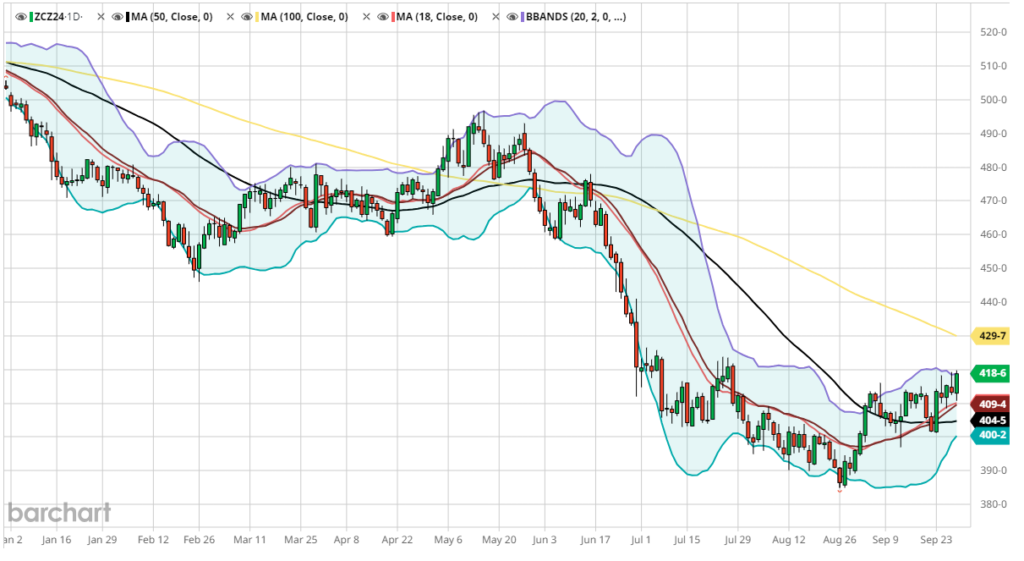
Soybeans
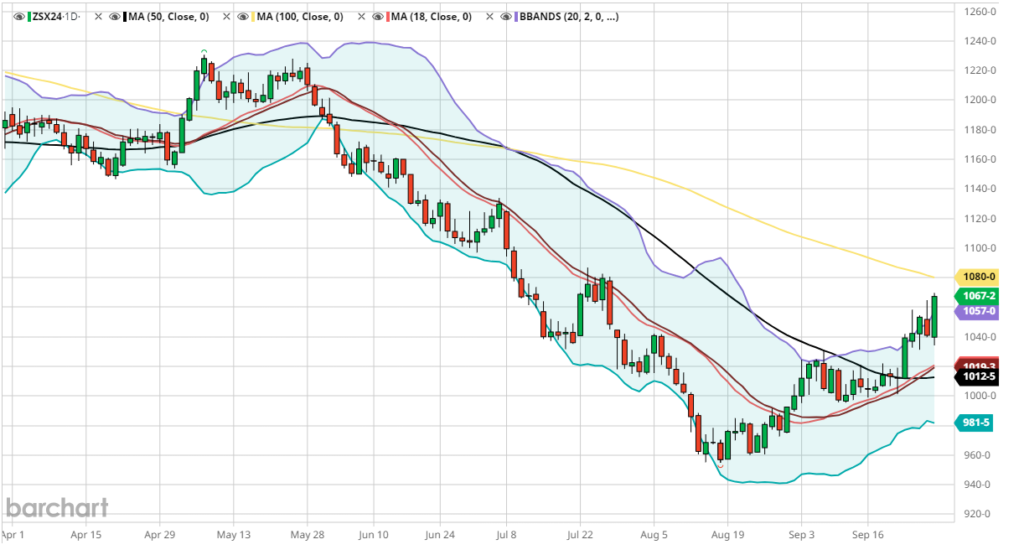
Oats
- Western Canadian oat production is trending to the light side. Some early oat harvest having trouble hitting spec for 2CW. 3CW and 4CW is prevalent.
- Oat prices are sit at $3.75 to $4.50 new crop across the prairies. The $4.50’s belong to the glyphosate free market. Oat market prices have followed other ag commodities lower. Oats were anticipated to have been heavily sold by producers early in the production year when values were about $0.50 to $1.00 per bushel higher than todays values. Seeing bids pick up here in recent weeks due to lack of good quality oats.
- Oat crops lost top end yield with the heat and dryness. Test weight is an issue with lack of any precipitation towards the end of the filling period. Oat balance sheet could tighten up if yield losses come to fruition. North East Sask and Western Manitoba will call the shots on this crops balance sheet. Expect a tight balance sheet if demand stays steady.
- Front end demand is largely covered off for oats although and pricing will depend on post harvest demand and how this crop actually shakes out. AAFC is calling for a carryout of just 350,000 tonnes which would be considered very tight. Private analysts are higher but adjusting balance sheets lower in recent weeks.
Barley
- End users / Maltsters came out of the gate early with bids and appear to have covered off front demand. Malt supply issues are prevalent. High Protein is a problem and some problems have maltsters and exporters keeping bids firm. Maltsters still looking for some crop to round out their inventories
- Maltsters will need to be nimble here to source the proper supply they need.
- Corn is the Achilles heel to feed barley pricing. Corn is very cheap and even with barley values about 40% lower year over year, it still struggles to find competitiveness into feed rations. Barley is pricing into Alta feedlots competitively right now, but walks a fine line with corn.
- Exports are not expected to be anything special as we largely lost a pile of market share to the Australian market exporting into China.
- Malt is the play this year and grade at harvest will dictate price sentiment. Early malt bids are still holding place, slightly increasing.
Pulses
- Lentil Balance sheet revisions will be made lower than they were in early July. Some small pockets reporting way above average yields but more common than not to see less than anticipated yields. Some grade issues, disease.
- Global demand will be the key factor here. A few key sales to export markets will dictate the balance sheet massively come the end of the marketing year.
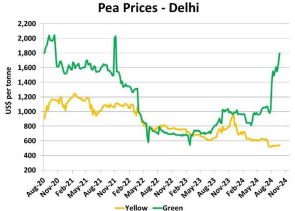
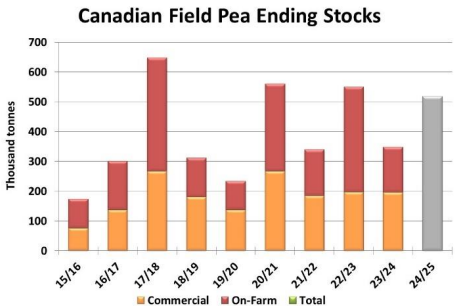
Durum
- Durum harvest well understood in western Canada. Yields leaning to the disappointing side from prior estimates and light weights are commonplace. Disease showing itself this year as some rains fell at prime time for disease timing. Crop easily smaller than July estimates. Grade will be the stickhandling part of marketing this crop.
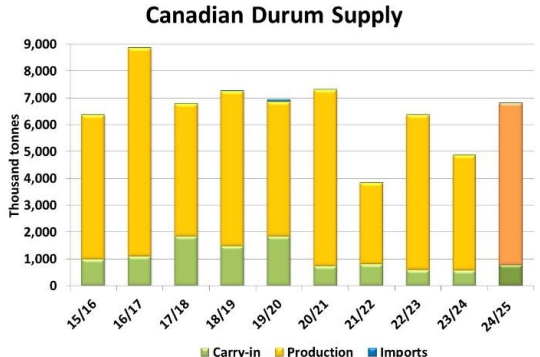
Flax
- Flax production is forecasted to be quite small this year with less acreage going into the ground. In fact, Flax acres are the smallest since the mid 1940’s. Flax prices will be influenced by EU demand. Russia’s flax crop will be challenged to move into EU borders this year due to new import tariffs that began on July 1st for flax which will be scaled up in the coming years.


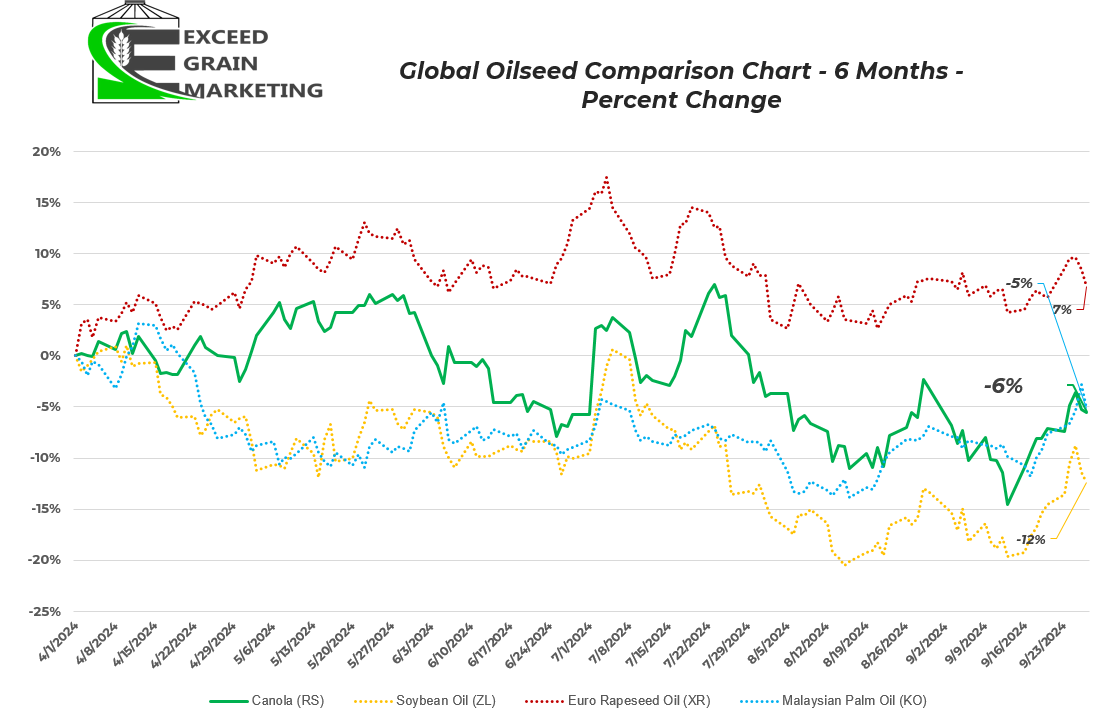
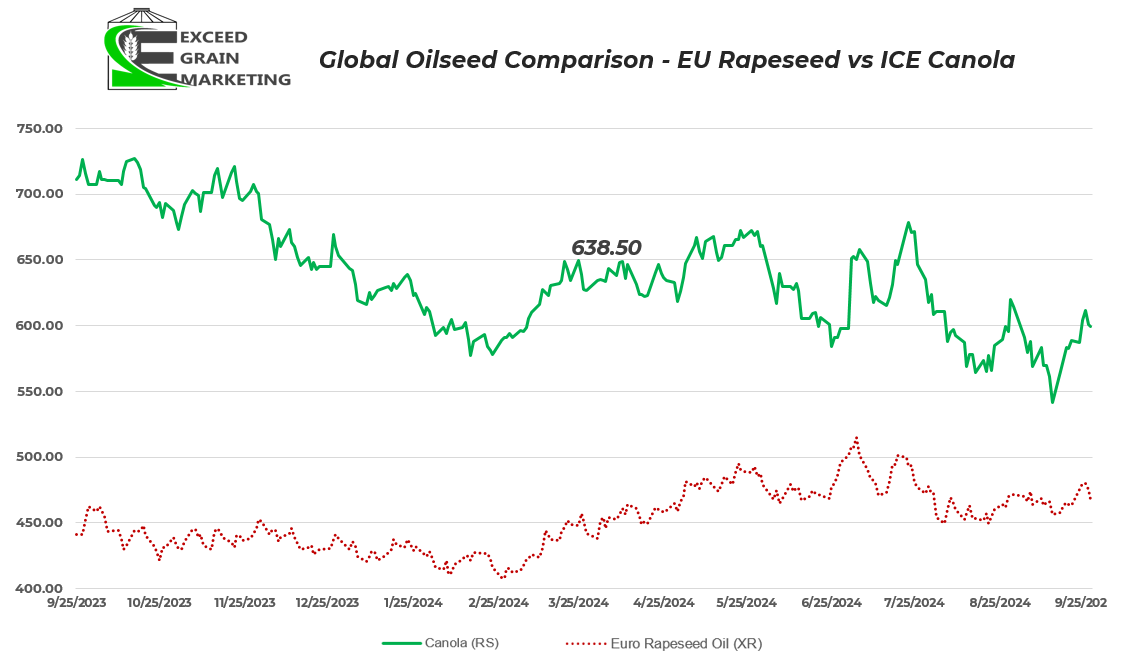
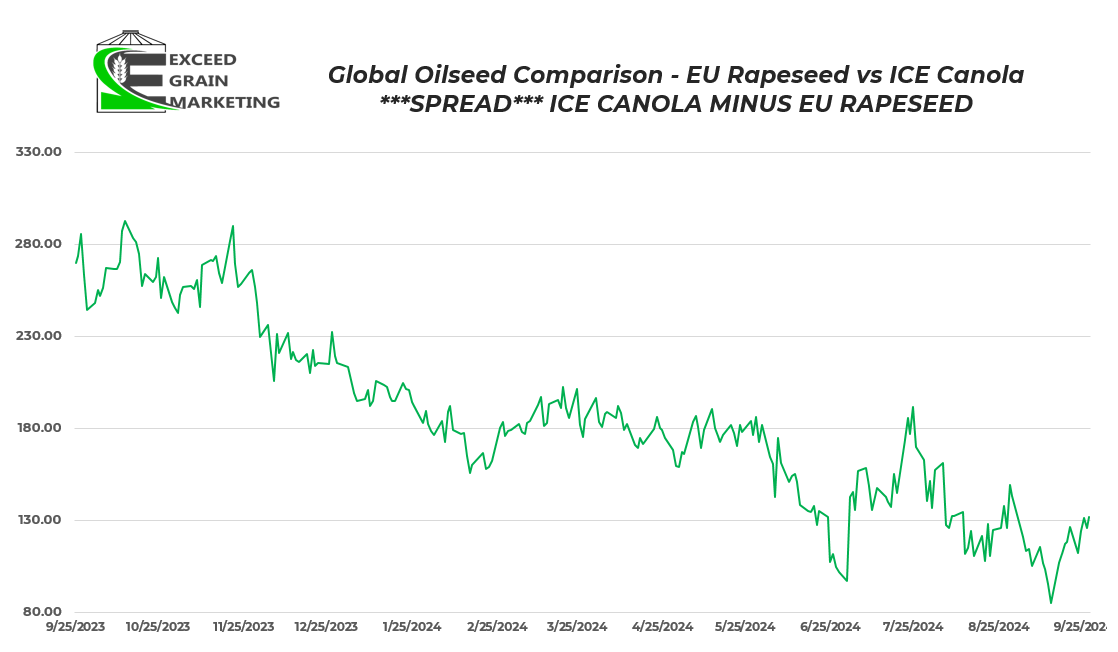
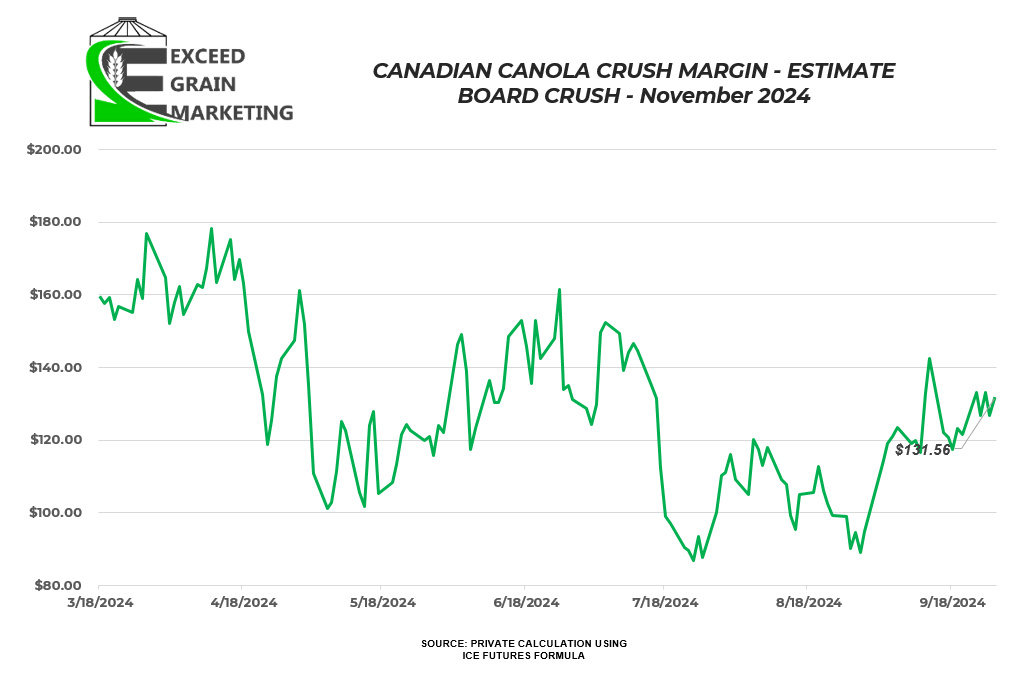
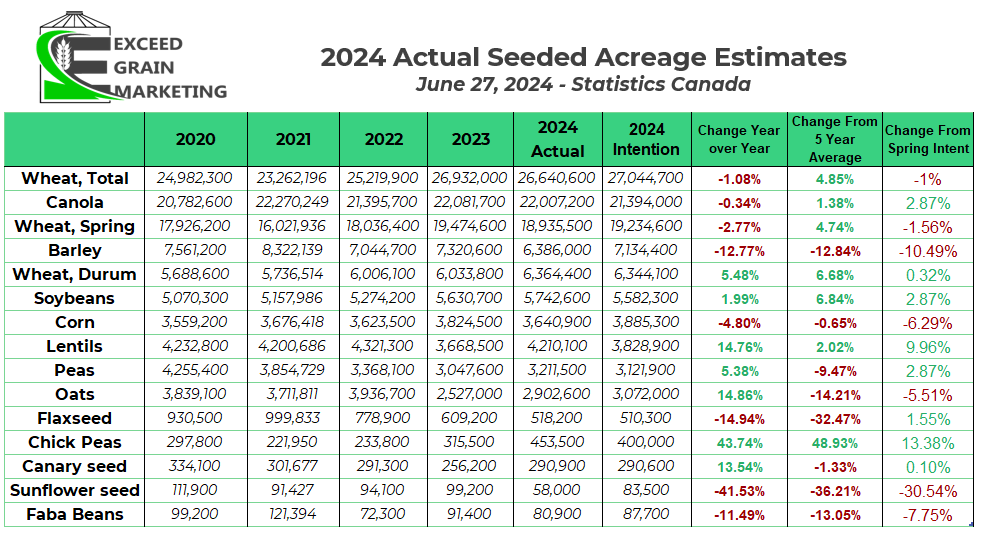
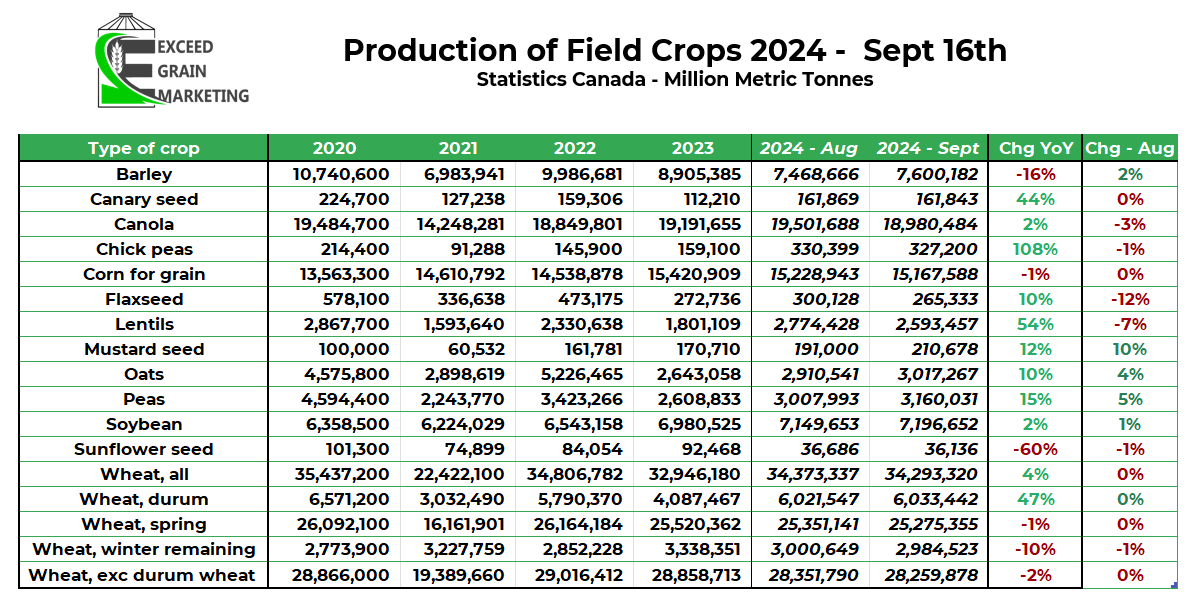
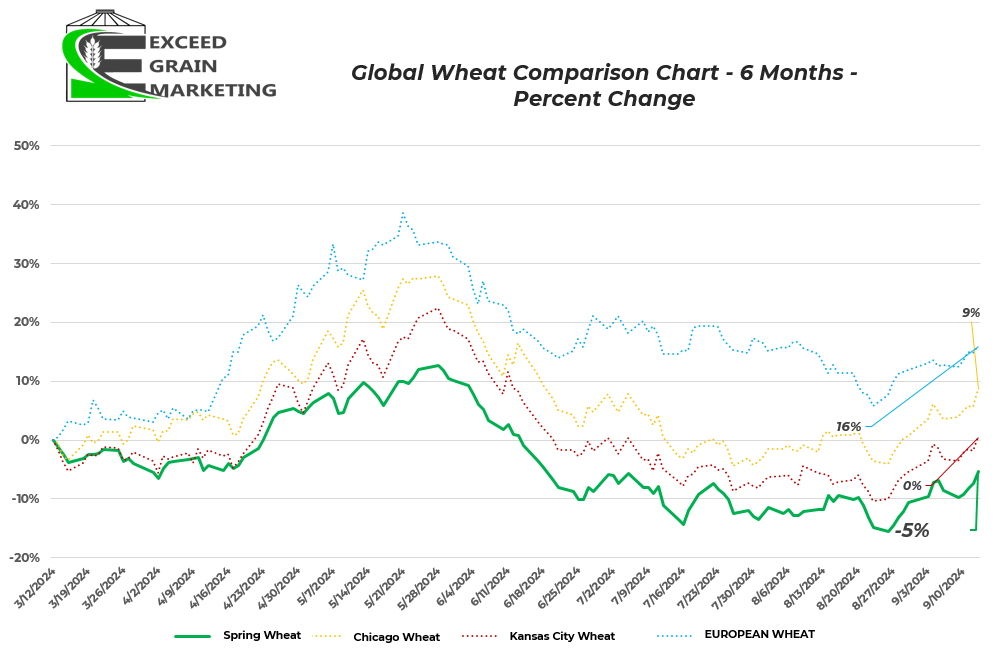
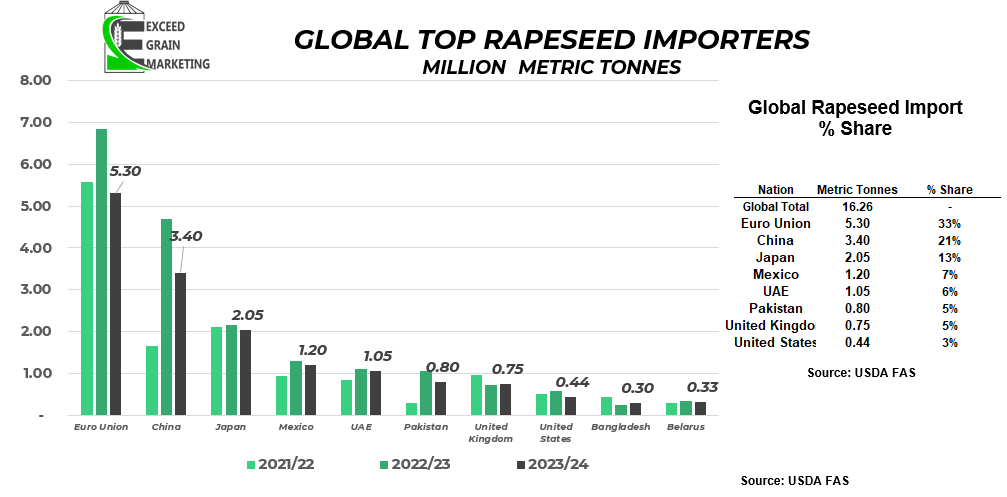
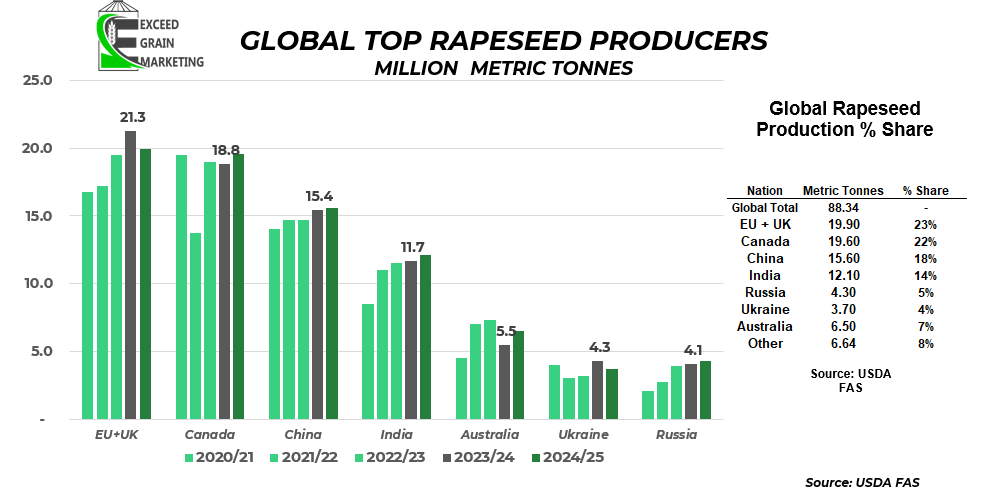
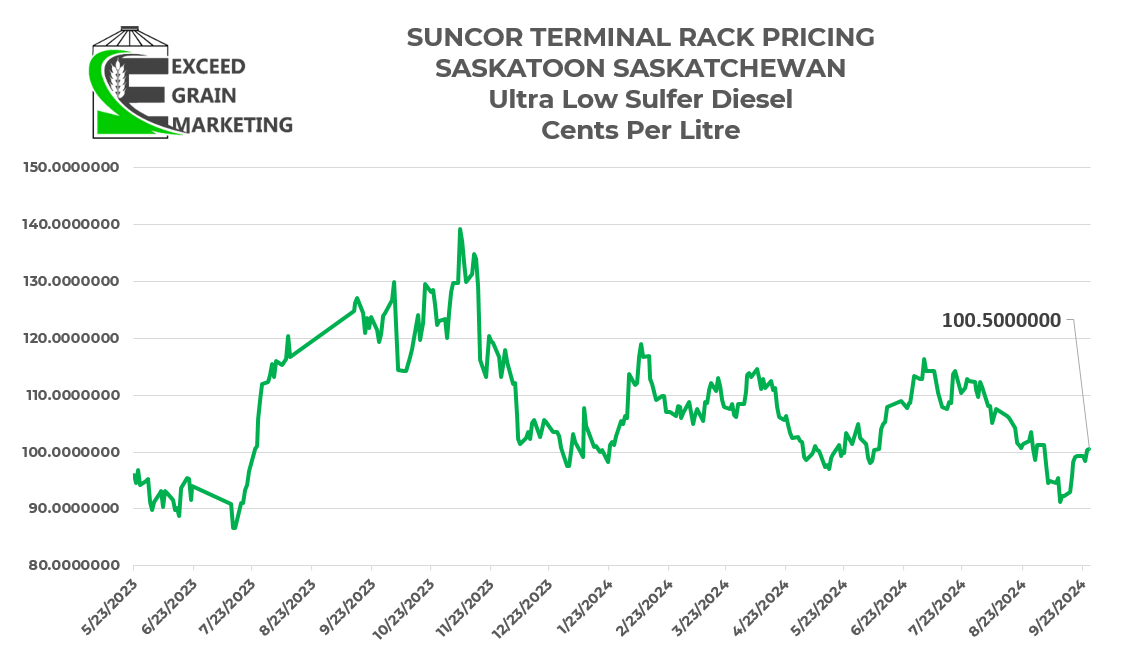
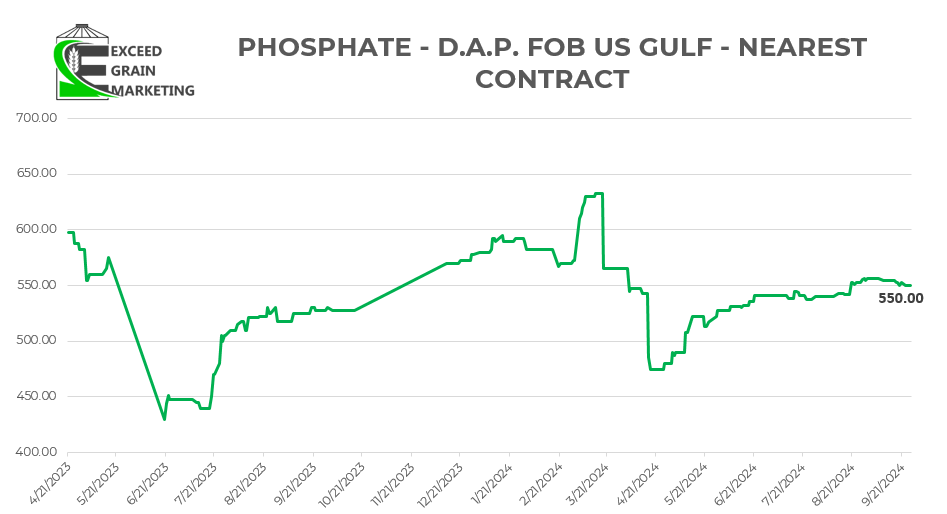
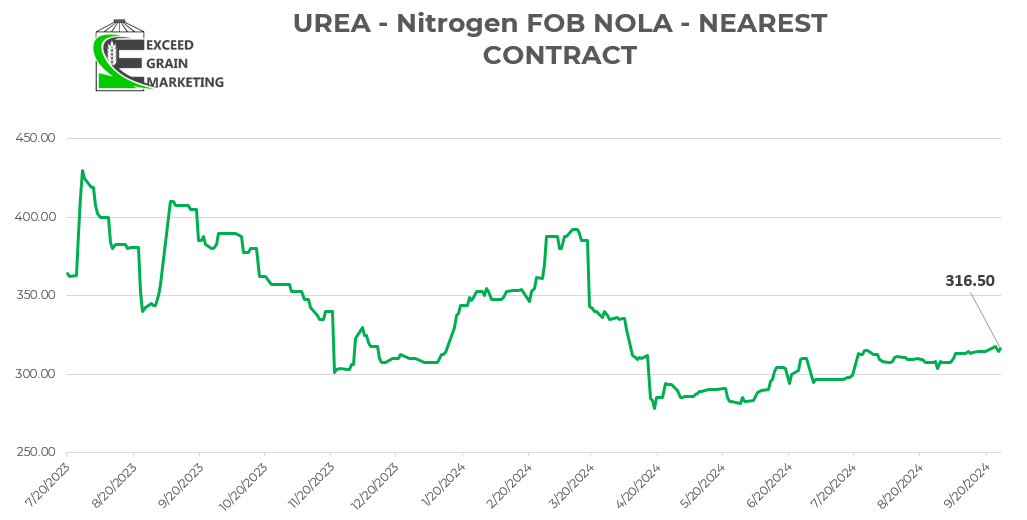
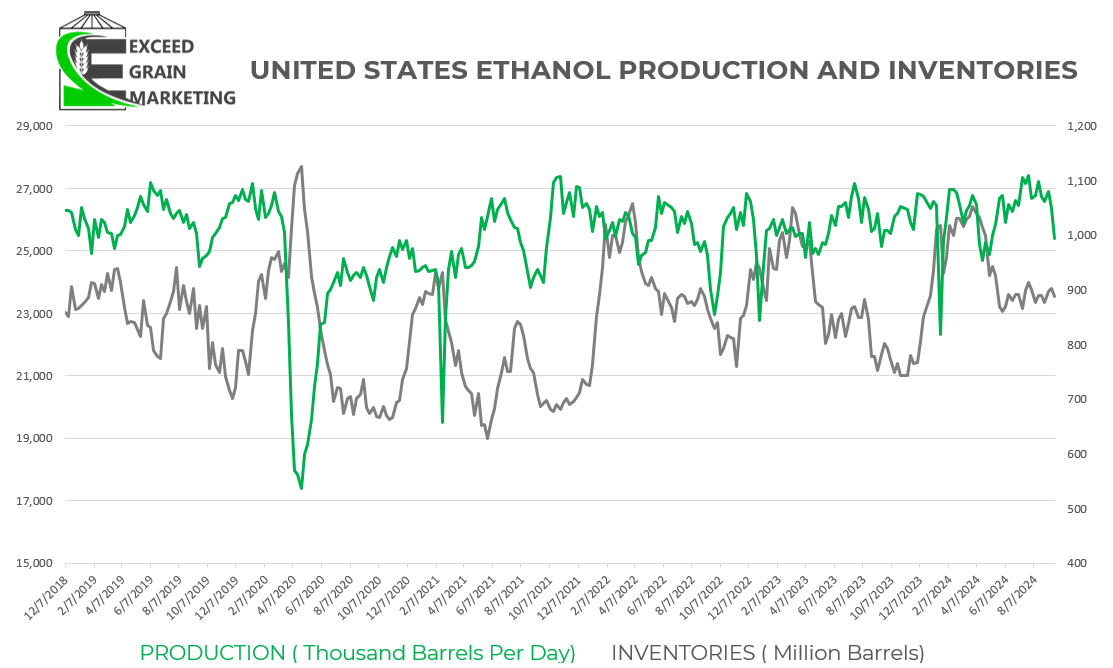
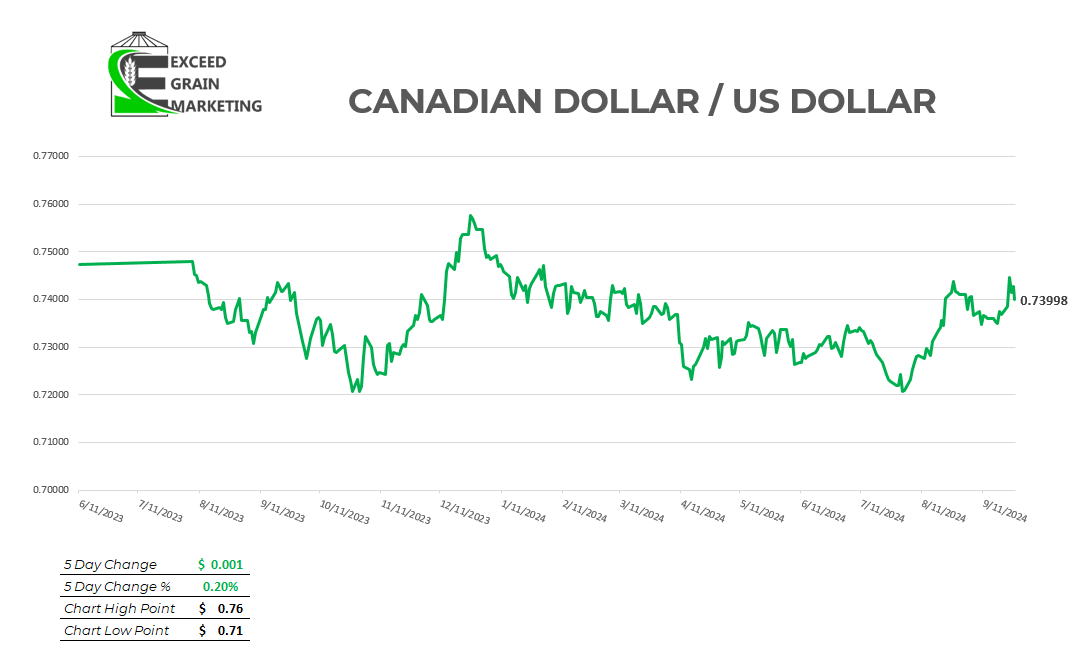
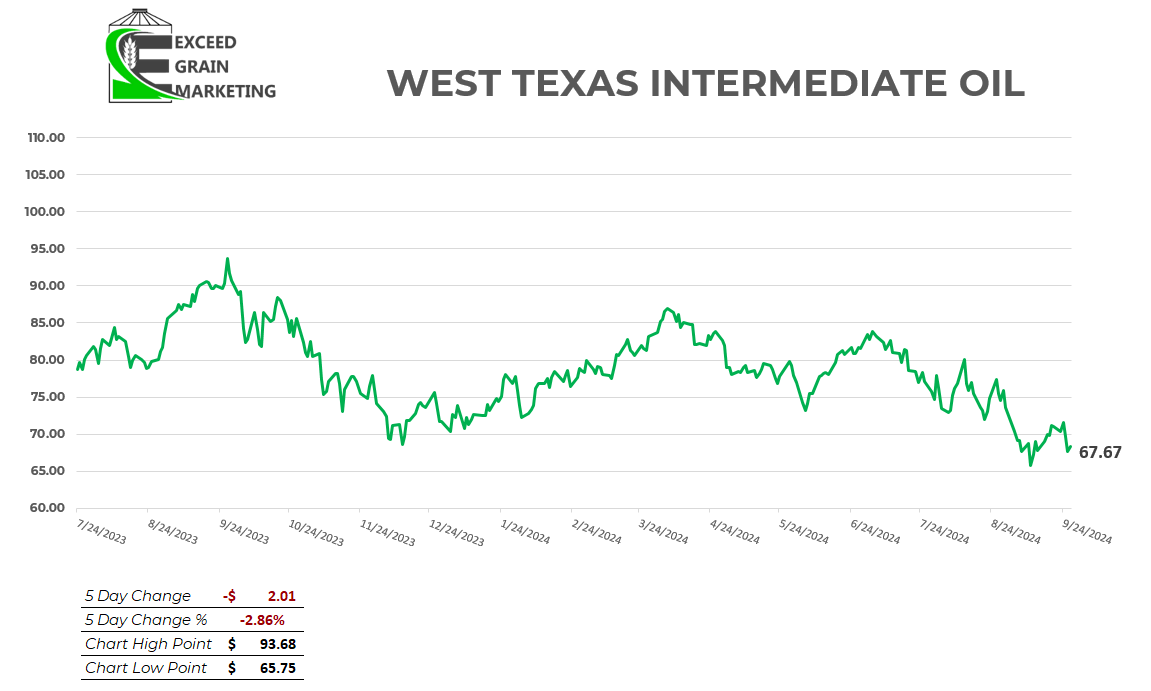
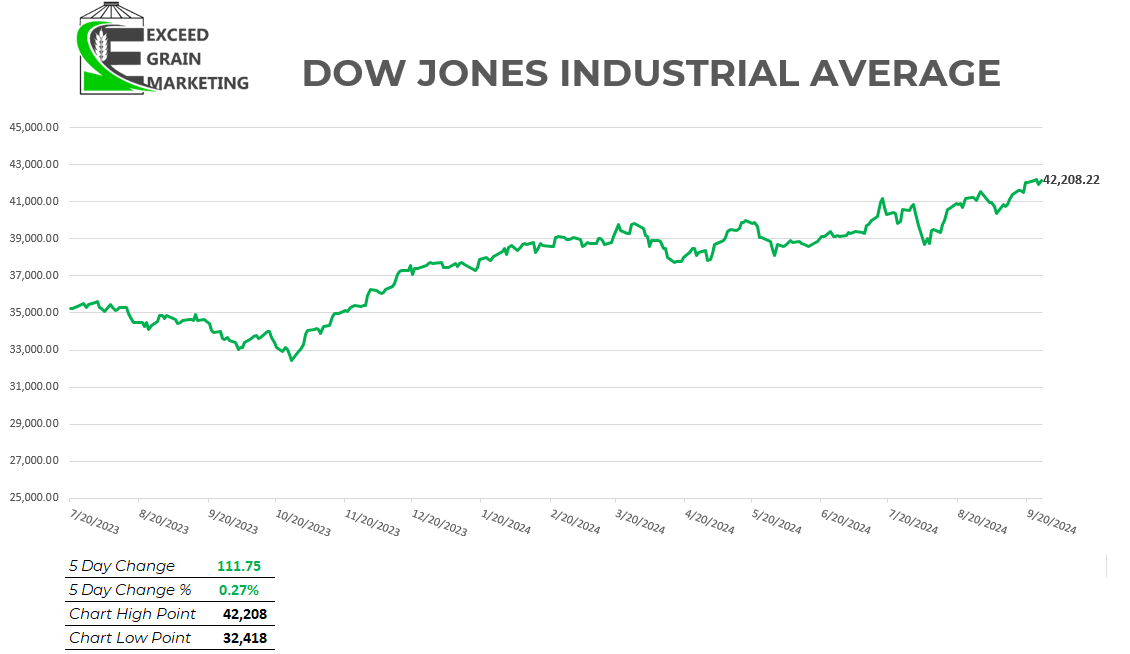
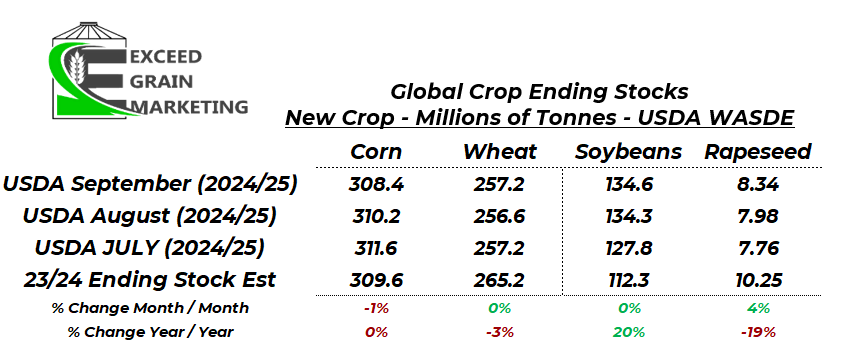

Our market intelligence reports incorporate information obtained from various third-party sources, government publications, and other outlets. While we endeavor to maintain the highest standards of accuracy and integrity in our reports, we acknowledge that the information provided may contain inadvertent errors or omissions. As such, we accept no liability for any inaccuracies or missing information in the data presented. Furthermore, these reports are not intended to serve as standalone investment or financial advice. We strongly advise that any financial or investment decisions be made in consultation with a professional market advisor. Reliance on the content or forecasting provided within of our reports for making financial decisions without such professional advice is at the sole risk of the user.


